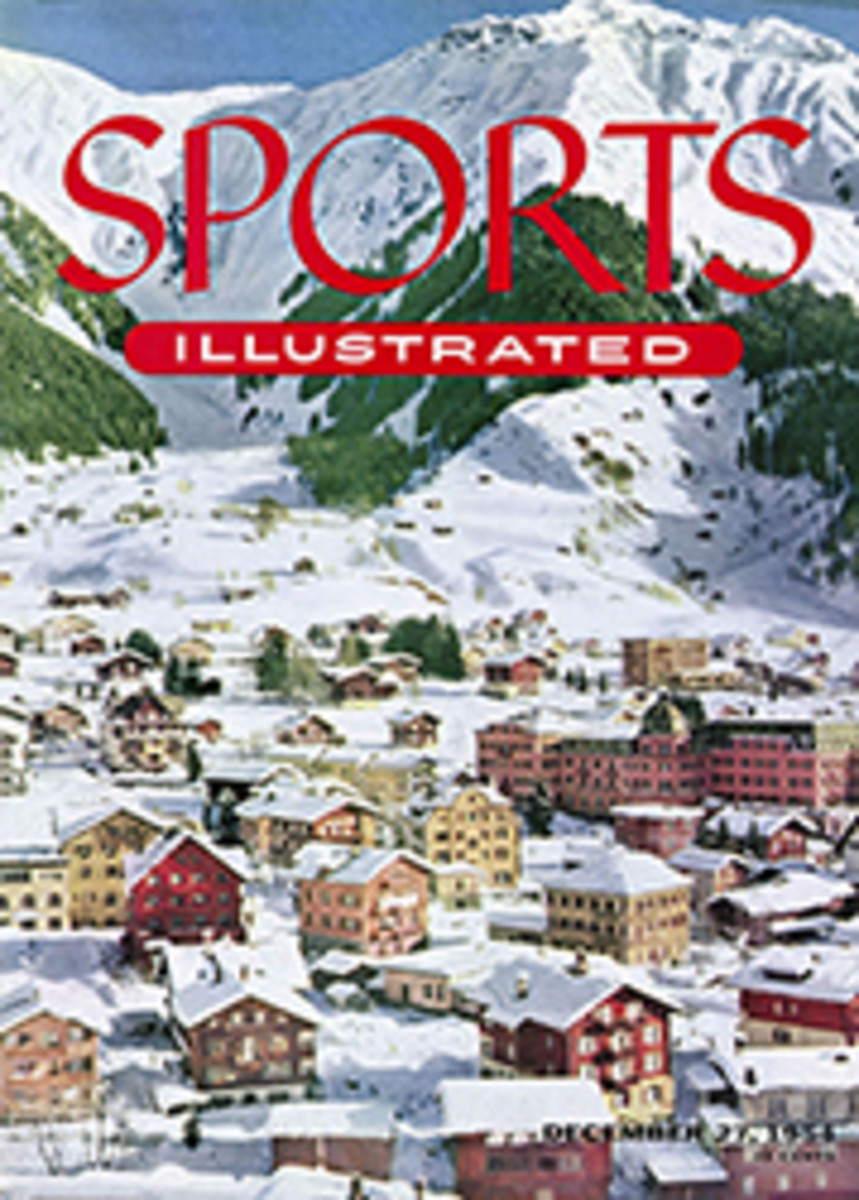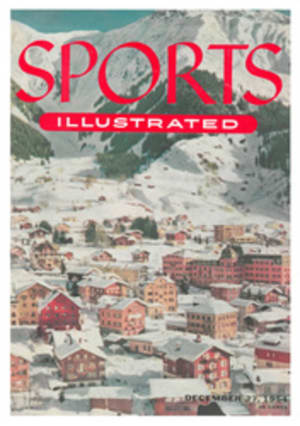
SNOWSHOES ARE STILL FUN
WALLINGFORD, VT.
NOT the worst way in the world to spend a Christmas afternoon is the way the young outdoorsman pictured above is doing it—finding quite a lot of adventure on snowshoes. Many people, mostly skiers, will tell you that the snowshoe is something of a dead duck in the world of winter sports. But that isn't quite so.
It is true that the snowshoe has gone a long way down in popularity since it was such a big thing about 30 years ago. But it has made a comeback. Just a mild one, but a comeback anyway.
Skiers are likely to insist that on snowshoes you are a slow-going fellow doing something that is dull and plodding. Possibly so. But—can anyone hope to get a bigger kick than the one you get when, in your slow and plodding way, you come face to face with a wandering deer? Don't expect it to happen on skis. But on snowshoes it's likely. It even figures.
Snowshoeing is certainly one of the earliest American sports that exists. If you have any doubts, just ask the Indians. Or the Eskimos. They got the thing going. Primarily, it's a North American sport that traces back to the old stocking-cap days, while the glamorous ski had its origin in the Scandinavian countries and was exported therefrom to the United States.
The snowshoe goes too far back for exact documentation. But the Indian and the Eskimo hold the franchise, the record says. These are not flighty people. The way they made them, in their day, was to bend the snowshoe frames, or bows, out of hickory or white ash. They boiled the wood strip for the frame in water; then they bent it around a properly shaped mold.
They made their lacing out of deer hide, or else caribou or moose. After soaking the hide in water and scraping the hair off, they cut strips of the proper width for lacing.
The way they laced, in those days, was hardly different from the way it's done today. After making the lacings soft and pliable through the water treatment, they pulled it tightly into the snowshoe frame. Then they let them dry, which made them even tighter and harder. They used animal fat to give them a finish. As of now, spar varnish is used instead for this finishing job.
At least, that's what's used by Vermont Tubbs, Inc., today just about the largest remaining manufacturer of snowshoes in the country that gave birth to them. Mr. Tubbs, who started all this, is now dead, but his company lingers on. Mr. Tubbs wasn't the original maker of snowshoes in America but he was close to it and he studied under the original. The first was really Mellie Dunham of Maine, who got going around 1870 and carried on the trade until 1900. Some of those old snow-shoes that Mellie concocted are still on the trail, giving good service. That about proves that a snowshoe, when made right, lasts a long, long time.
W. F. Tubbs, a Maine farm boy, followed Mellie. He'd put in a few years working for him after school. Around the turn of the century, Mr. Tubbs took over in the snowshoe field with a place in Norway, Me., later moving to Wallingford, Vt.
He made snowshoes so well and so conscientiously that people like Admiral Byrd used them on his polar expeditions. Stores like L. L. Bean in Maine (whom you can't kid about these things) and Abercrombie & Fitch in New York (who don't fool easily either) selected Mr. Tubbs's snowshoes for their customers.
One really great thing about the snowshoe is that it's so easy to get acquainted with. A ski takes a lot of learning, but a snowshoe is your baby from the word go. Whether you use the Trapper, the Michigan Alaska or the Bear Paw, you can strap a pair on your feet after a little practice to get used to walking on them and set forth with all the assurance in the world that you'll reach your destination. No fancy tricks here.
A snowshoe will give you at best a five-mile-per-hour momentum. But what you see sort of makes up for the lack of all that 20th century, Scandinavian speed you get with skis. The Indians and the Eskimos knew what they were up to.
PHOTO
PHOTO
THE ALASKA TRAPPER. OR TRAIL
PHOTO
THE MICHIGAN, OR MAINE MODEL

